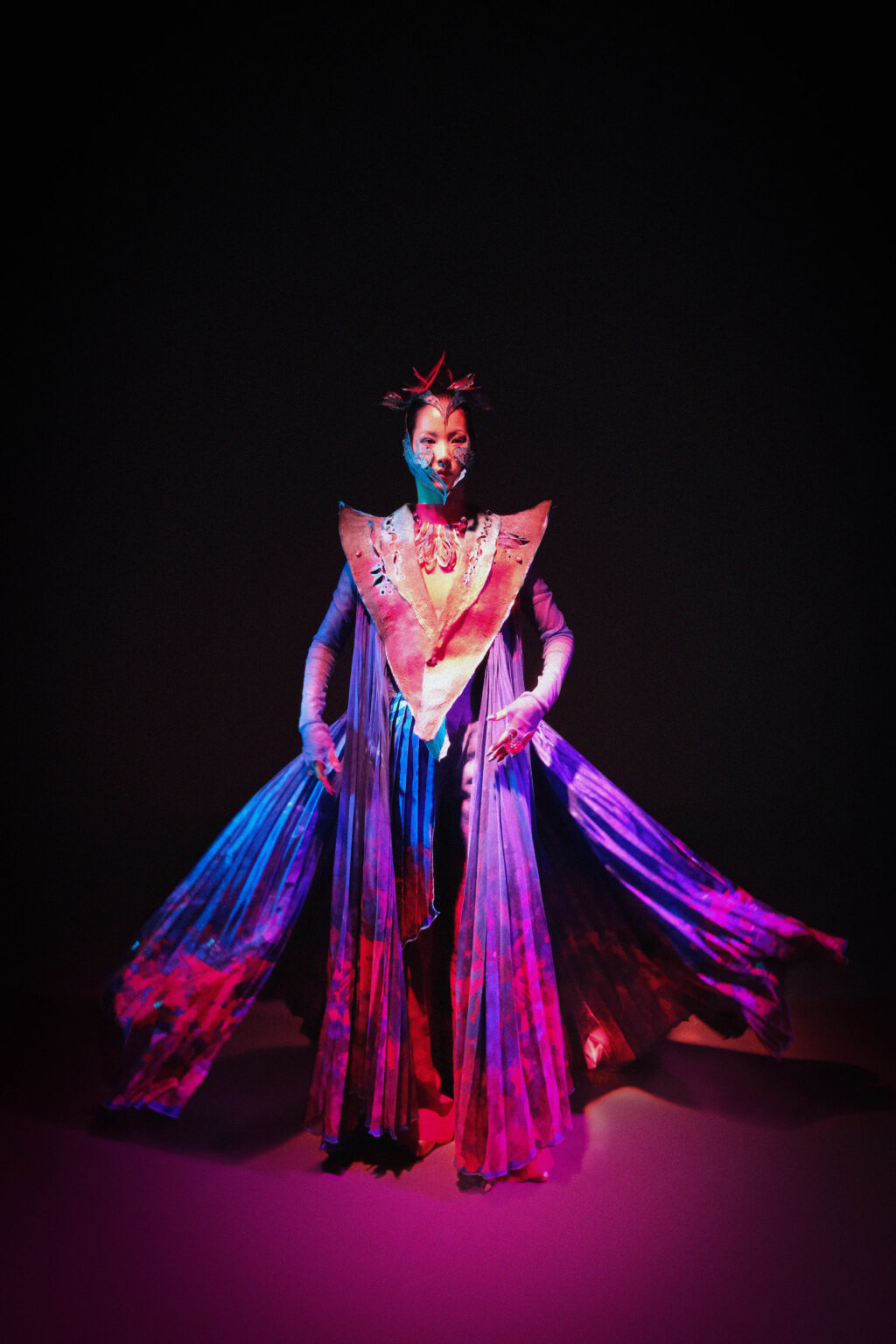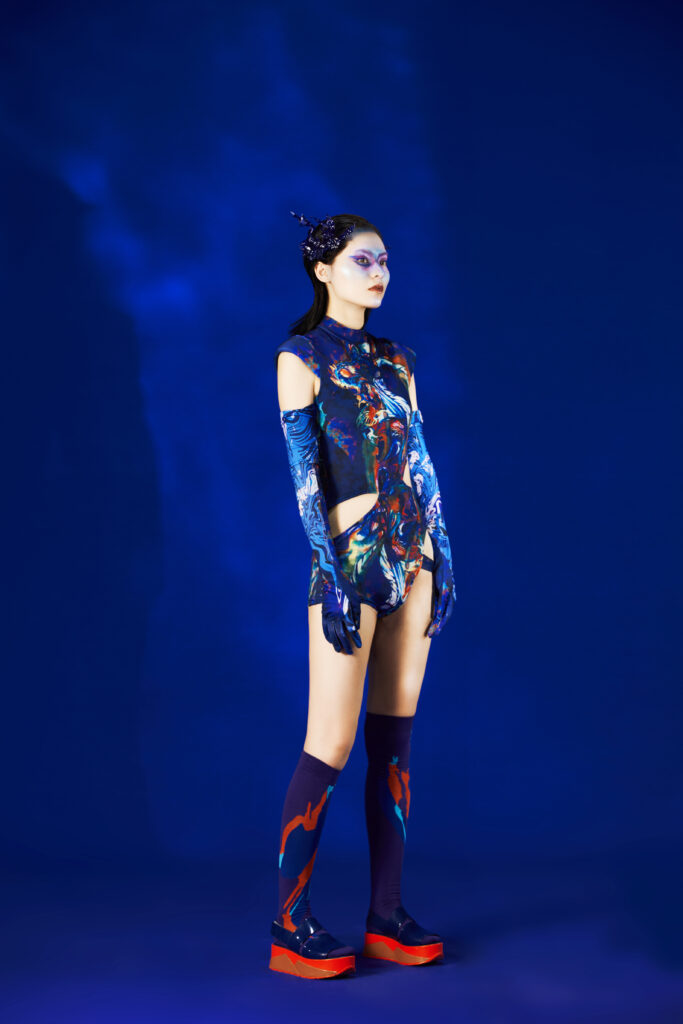
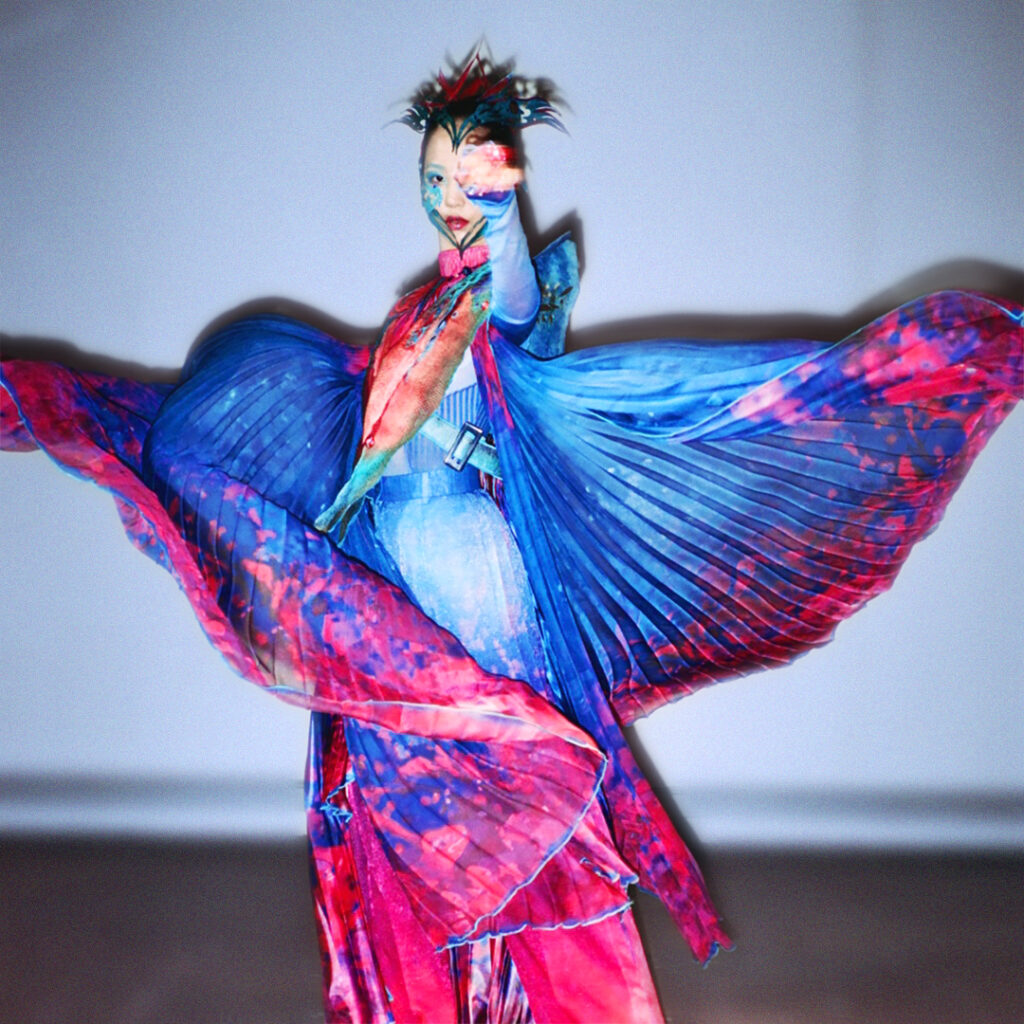
Lei Jiang’s “No-Land” collection invites viewers into a vivid underwater world shaped by a future where land has disappeared. Set against the backdrop of alarming climate pre- dictions for 2050, the collection brilliantly merges speculative fiction with contemporary and future fashion, creating a narrative that depicts evolution of human civilization in the deep. Lei imagines a world where rising sea levels have transformed coastal cities into underwater habitats, prompting the development of an entirely new way of living. The collection captures the unique vision by presenting characters in their fluidity of identity in an ever-changing world.
Lei blends physical and digital techniques to create characters in their different depth. The digital creation of character and fashion are stunningly executed, showcasing innovative use of technology to push the boundaries of traditional fashion design.


Can you share a specific moment or experience that deeply influenced your design aesthetic?
Ever since I was in primary school, I began watching anime and manga. I started realizing how the characters are differentiated by their costumes and styles, usually by using different colors. They deeply influenced my design aesthetic as I started to draw my own characters and garments. Now, I still create characters to fulfill my collections. I am also very influenced by their unique cultural perspective. I am always into narratives that portray Western culture with an Eastern Asian perspective, which also encouraged me to think broadly about cultural intersections.
In what ways do you see technology shaping the future of fashion, and how does it impact your work as a designer?
I recently combined digital creation with my physical works to discover more in terms of the balance between virtual reality and the physical world. From digital avatar to 3D printing, I have found that technology helps me have better understanding of the present and the future. However, I have a mixed attitude towards using AI in design or as an assistant.
How do you balance staying true to your aesthetic while also adapting to current trends?
My designs have strong identities, which are always eclectic, dramatic, and romantic. I have created my own unique design language, especially when it comes to color and patterns. In my opinion, most people are influenced by current trends even if one denies following them or leading them. I believe that as long as the design effectively tells the story, is original, and remains authentic, it will undoubtfully reflect my aesthetic and uniqueness.
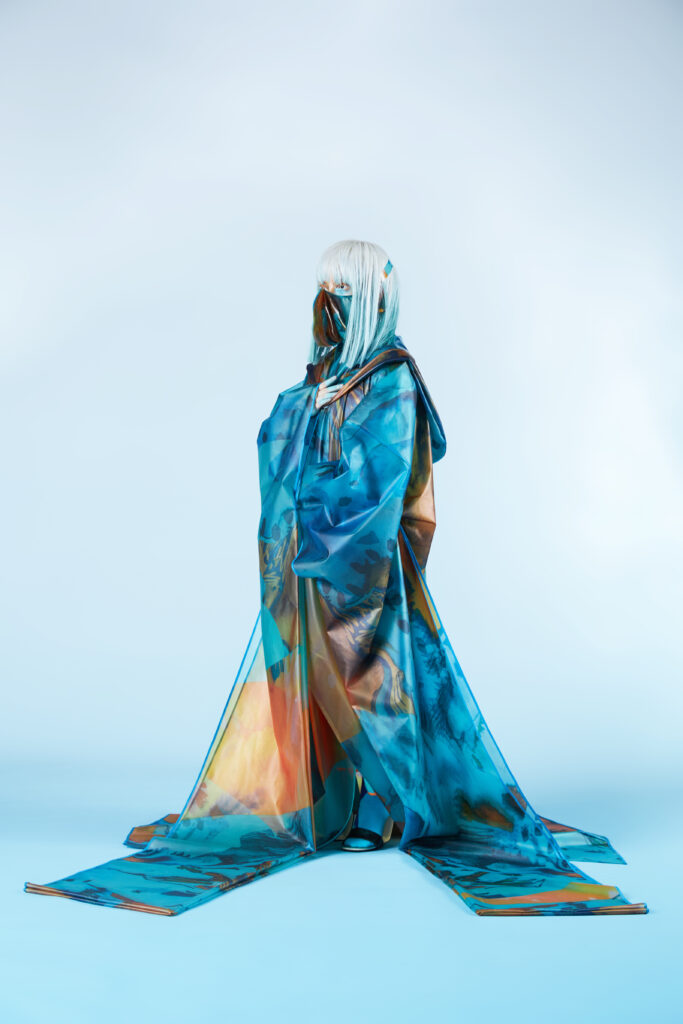
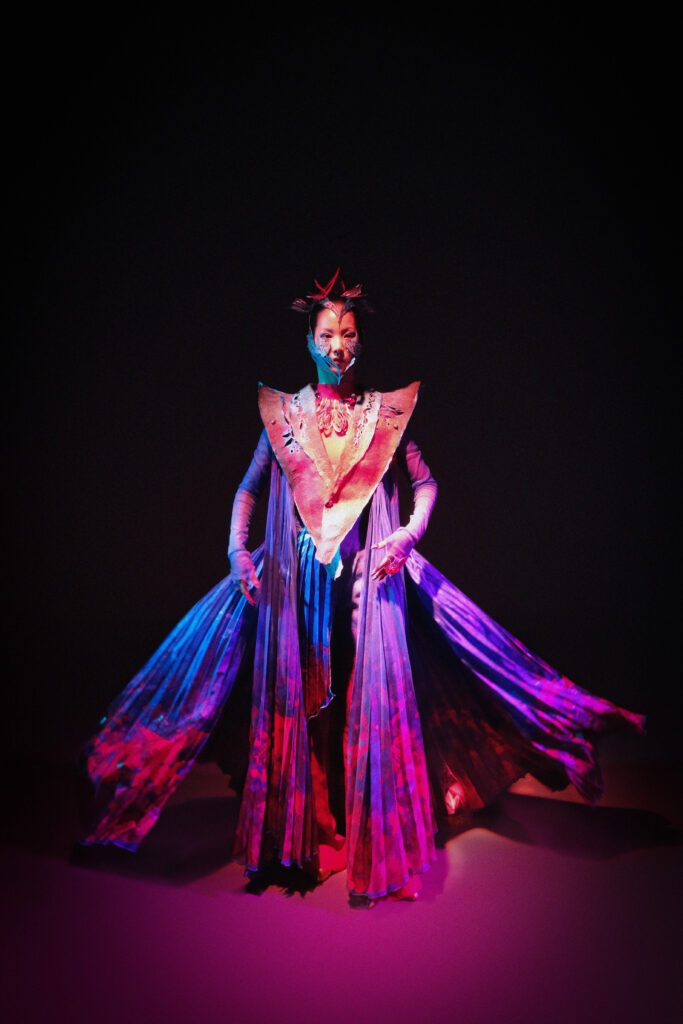
If you had to design a collection based on a specific emotion, which emotion would you choose and why?
Nostalgia. The themes of my designs are usually not directly related to memories of the past and the feelings that come with them. They are more about future scenarios. However, many of my designs are influenced by vintage and antique patterns as well as retro color palettes. I believe there’s definitely something powerful about the emotion of nostalgia which also digs out all kinds of feelings, like joy, sadness, pride, and shame. These subconscious memories make me think about how to shape my future world. My focus has always been on discovering human identity, and if there are more human emotions involved in my designs, they might become even more vibrant.
Can you walk us through the story behind your favorite piece and what it means to you personally?
My favorite piece in the “No-Land: Life in 2223” collection is called Evening Lacey. It’s a set with a fish skin jacket, pleated trains, a bodysuit, and a pair of trousers. This is the first time I use fish skin as a material combined with pleated fabrics and prints. It depicts a landlord in an underwater residential building, with their powerful silhouette and striking colors. I started exploring more design and technical options of fish skin after creating this piece. I wanted to emphasize the importance of creating a sustainable future with upcycled or organic materials as well as preserve and promote cultural heritage.
If you had the chance to design an outfit for a fictional character, who would you choose and what would you create for them?
Oscar François de Jarjayes from the manga The Rose of Versailles, created by Riyoko Ikeda. She is such an inspiration to me. In the original manga, she is always dressed in her late 18th century French military uniforms and very occasionally in a dress. I would really want to see her in a contemporary or future suit set, with her androgynous appearance and posture.
Fashion/Photography/3D LEI JIANG
Photography KAWN LEE
Models ANNIE ZHAO/TIANYI ZHAO/LEYI ZHOU
@donutleij
London, United Kingdom
